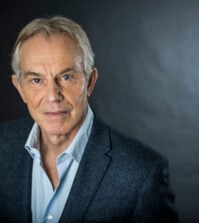India Alters Its Interaction With The Media

In the constantly evolving world of social media, the accepted conventions are being turned upside down on a regular basis. This causes problems for large organisations like government administrations and even big media groups. India has become the latest testing ground.
The recent election of Prime Minister Narendra Modi of the Bharatiya Janata Party (BJP) has led to a pronounced change in the way government is interacting with the media. India has a thriving mainstream press, with hundreds of newspapers and 275 news channels. But the Indian government is more and more copying the actions of its Prime Minister and withdrawing from direct discussions with journalists.
Prime Minister Modi is the most followed Indian leader on Twitter and also has 10 million followers on Facebook. (GGF discussed the use of Twitter by governments here.) Through these channels the Prime Minister, using both his personal and official accounts, talks directly to the public following him. Elements of speeches, comments on events, photographs and even video are all constantly updated.
His straight-talking style is ideal for social media and is a break with convention. Convention is being further turned on its head by the fact that Prime Minister Modi has no media adviser, although he has appointed 70-year-old Jagdish Thakkar as his Public Relations Officer. This means there is no ‘point man’ for the mainstream media to contact and discuss the issues of the day.
Similarly, when on foreign trips, it has become usual for up to 30 journalists to accompany the Prime Minister on his official flight. In recent trips, Prime Minister Modi has taken reporters from only two news agencies and a state run news agency.
Kuldip Nayar, a senior journalist speaking to the BBC, said: ‘Mr Modi’s attitude is now percolating to his council of ministers who were once media friendly, but are now avoiding journalists.’
To the mainstream media, this is a major issue since they say they cannot hold the executive to account or get behind bland public announcements to discuss complex subjects. There is also a far from harmonious relationship between Prime Minister Modi and the press, going back to when he was chief minister of Gujarat.
This is against a background of a long and extremely cosy relationship between politicians and press, where there were often far too many cases of open access and private briefings. This also extended to journalists discussing with ministers conversations they had with corporate lobbyists – a scandal known as the Radia Tapes.
The Modi administration is in its early days so it remains to be seen how relationships will progress between administration and media, but for now, yet again, social media is being used as a major weapon in the campaign.


















